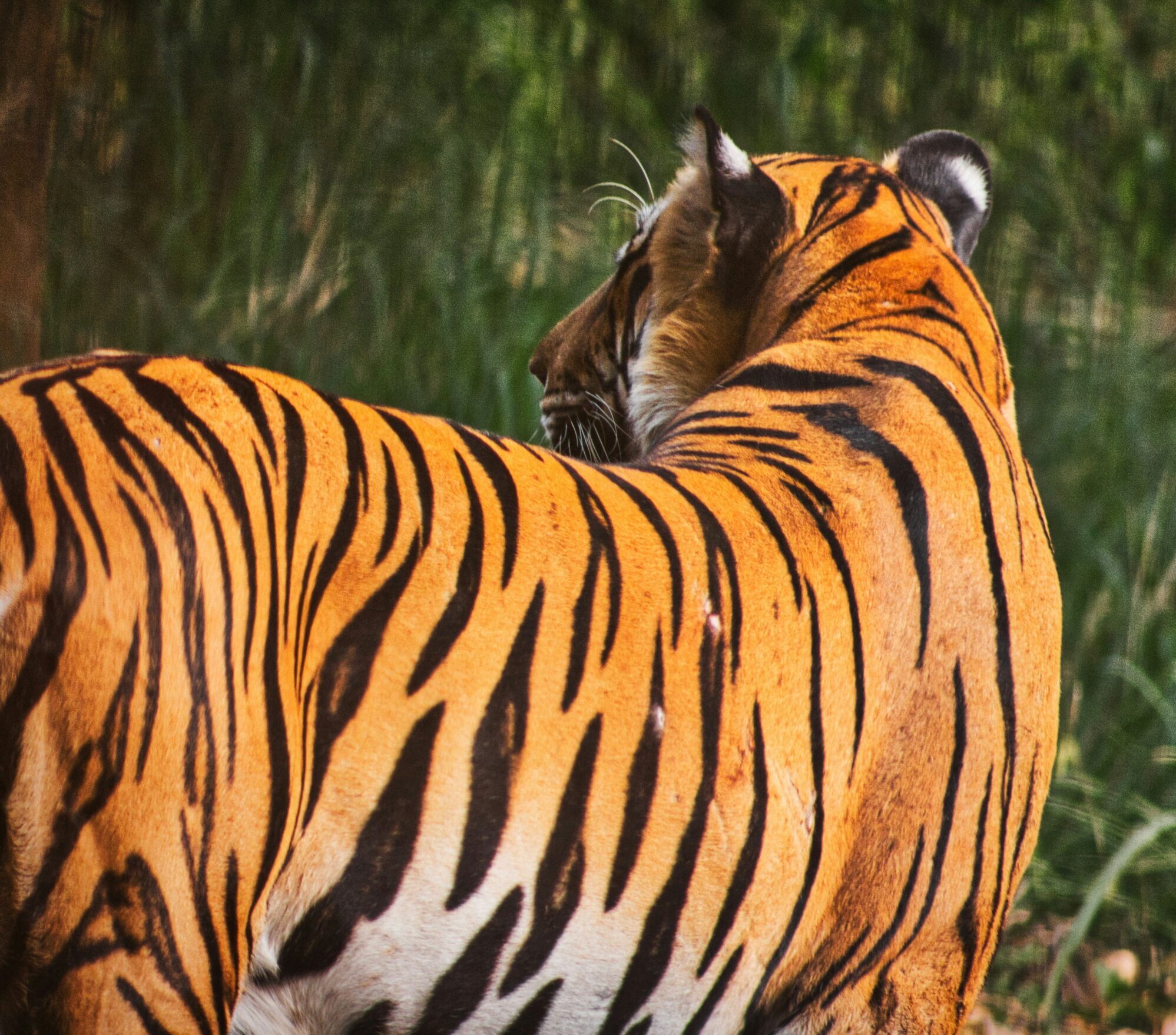
Why Do Tigers Have Kind Of Flashy Orange And Black Stripes ?
At first glance, a tiger’s bright orange coat seems like the worst camouflage choice for a predator lurking in the green jungle. If blending in is key to hunting, why isn’t the tiger green? Well, nature doesn’t work the way human logic does, and what looks obvious to us isn’t always the case for the animals involved.
Stripes: The Art of Disappearing
Tigers rely on disruptive coloration : a pattern that breaks up their outline, making them harder to detect in dappled light and dense vegetation. The black stripes create high-contrast edges that distort their shape, making them nearly invisible in tall grass, especially at dawn or dusk when they hunt.
Each tiger has a unique pattern, like a fingerprint, helping with individual identification within their species.
Why Orange, Though?
Here’s the trick: most of the tiger’s prey – deer, boars, and other ungulates – have dichromatic vision, meaning they don’t see colors the way we do. To them, orange looks like a dull greenish-brown, blending perfectly with the jungle. This makes the tiger practically invisible to its prey, proving that what seems like a flaw to us is actually an evolutionary masterpiece.
So, the tiger’s coat isn’t just about looking cool, it’s a finely tuned survival mechanism, honed over millions of years to turn one of the planet’s biggest predators into a master of stealth.
